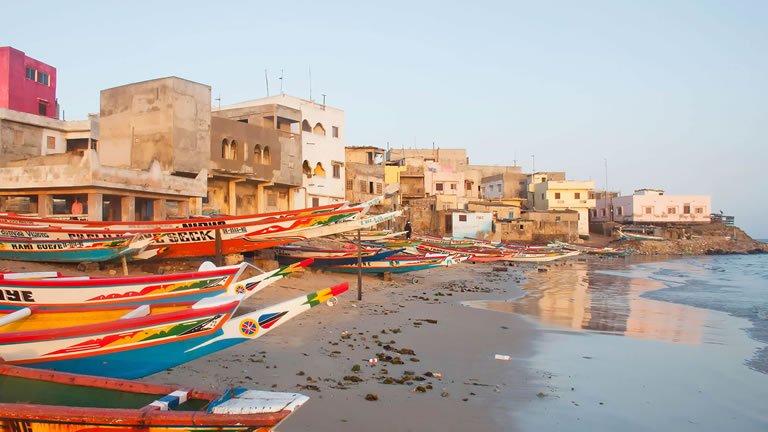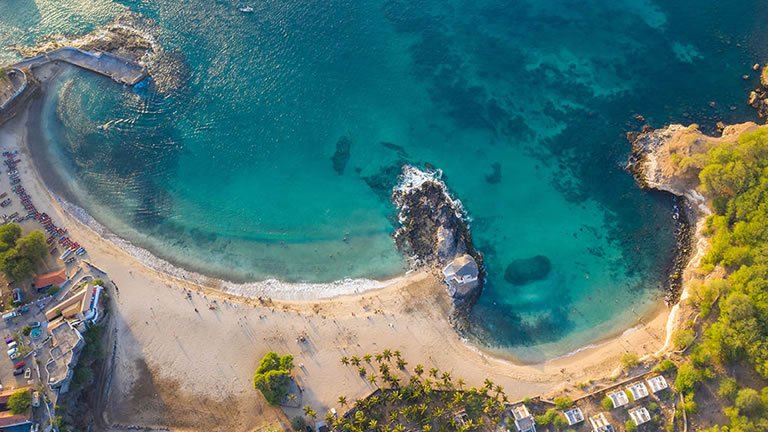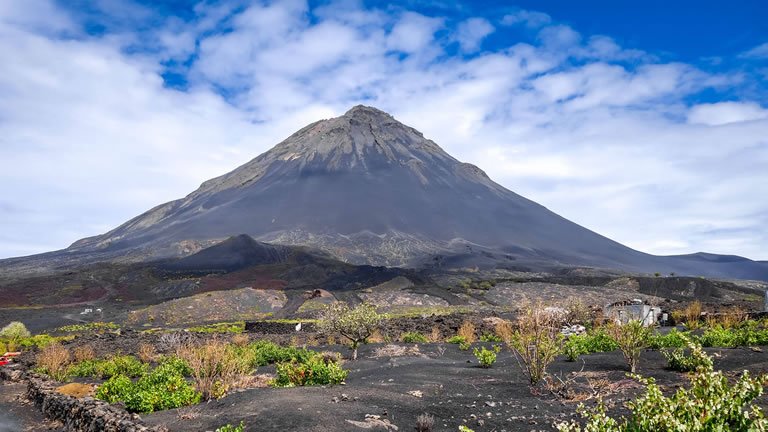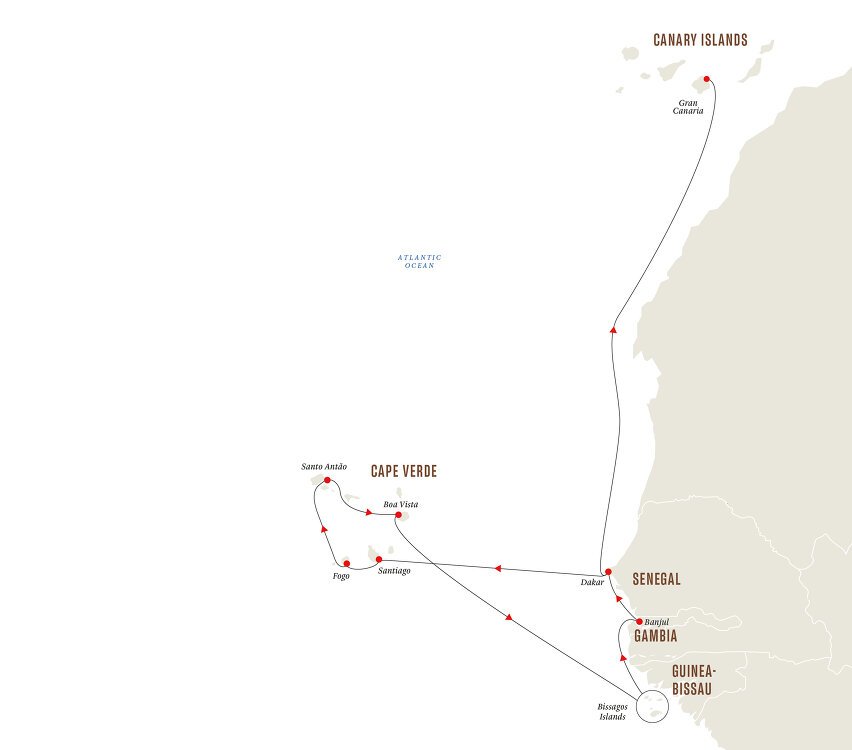West African Islands To The Canaries – Volcanoes & Wildlife Expedition Cruise
Overview
Itinerary
Your expedition cruise starts in Dakar, Senegal’s colourful and animated capital. Located at the tip of the Cape Verde peninsula, it’s the westernmost city not only in Africa but in all the Old World. Dakar is a low-rise, cosmopolitan place, famed these days for its buzzing music and arts scenes. The city enjoys a laid-back atmosphere, and you’ll see suit-clad businessmen rubbing shoulders with barefoot market traders in this swirling kaleidoscope of modern Africa.
The peninsula on which Dakar lies projects westwards into the ocean, and it was formed when offshore volcanic islands were joined to the continent by a land bridge. The exposure to humid winds off the sea keeps the vegetation a bit greener than the otherwise desert-like landscape of northern Senegal, hence its name, Cape Verde, meaning Green Cape.
You’ll find the beating heart of the Dakar in the district of Medina, with its maze of streets, the bustling market of Marché Tilène, and the imposing Grand Mosque. Also worth checking out is Independence Square, which is laid out with gardens and fountains and is home to numerous grand colonial buildings that hint at the nation’s past.
Our expedition ship MS Spitsbergen will be waiting for you close to the ferry dock. Upon boarding you’ll be greeted by the crew and given a complimentary wind and water-resistant expedition jacket. After you’ve settled into your comfortable cabin there’ll be a mandatory safety briefing to make sure we’re all safe at sea, and then it’s time for us to set sail and for the adventure to begin.
Extend your stay with a Pre-Programme
If you’d like to extend your stay in Dakar at the beginning of your adventure, we recommend booking our optional Pre-Programme.
You’ll arrive in Dakar a day prior to embarkation, and the optional Pre-Programme includes one night in a hotel close to the city centre and harbour. Spend the first day relaxing after your long journey and make use of the hotel’s amenities, or participate in an optional pre-bookable excursion, such as the Bandia Animal Reserve. The next day after breakfast a transfer will connect you to a privately chartered ferry to historic Gorée Island.
UNESCO listed Gorée Island is the most interesting – if tragic – site in Dakar. You’ll see colourful colonial mansions alongside the infamous Maison des Esclaves, where slaves were kept before transportation across the Atlantic. Despite its sobering history, the island has many beautiful sights, including ancient baobab trees, and you’ll be able to see artisans creating and selling their crafts.
During your day visit you’ll dive deep into the history of this UNESCO World Heritage Site. Your guide will take you to the Maison des Esclaves and museum, and lunch will be served in a local restaurant. After this action-packed day your ferry will take you back to Dakar port where MS Spitsbergen is waiting for you.
Your cruise has begun and we find ourselves sailing almost due west in the direction of the Cape Verde Islands. It’s a journey of around 360 nautical miles, meaning there’s plenty of time to get to know our comfortable expedition Ship MS Spitsbergen, and to prepare for upcoming destinations.
You’ll get to know some of your fellow passengers, as well as our Expedition Team – a friendly and knowledgeable bunch of people, hand-picked for their expertise on our destinations. You may also want to check out the Science Center, which is often where our team hang out – there’s a range of hi-tech equipment here, and you can ask about our citizen science projects that contribute to important research and help us protect the natural places we love to visit.
Get acquainted with the Explorer Lounge & Bar, an informal place to meet and chat, and sample delicious dishes in our onboard restaurant, Aune – named after a family of Norwegian chandlers who equipped many ships back in the days of historic exploration. For relaxation, try out the hot tubs on deck or the panoramic sauna – you’ll love it.
As we sail, there will be talks by the Expedition Team which could be on a number of topics relevant to our travels, immersing you in the knowledge that’ll enable you to get the most out of this exciting journey.
Next stop, the amazing Cape Verde Islands.
Santiago is the largest island in the archipelago, with almost half of all Cape Verdeans living here. It’s the perfect introduction to Cape Verde as there’s a little bit of everything, including the vibrant capital of Praia, the UNESCO-protected Cidade Velha, sandy beaches, green valleys and craggy mountains. It’s also reckoned to be the most African island culturally, and music is woven into the fabric of life here.
Discovered in 1460 by Portuguese sailors, Santiago was the first Cape Verde island to be settled, with Ribeira Grande – now called Cidade Velha – the first European city in the tropics. Humid enough to support profitable agriculture the island became a hub for settlers, and nowadays around 150,000 people live here. The capital, Praia, is a modern and dynamic city that attracts immigrants from the rest of Cape Verde and the African continent.
Located on Santa Maria Bay, at the southeastern tip of Santiago, Praia is built on several hills. The historical centre is on the natural platform known as Plateau, and almost everything of historical interest can be found here. The main square, known as Praça Alexandre Arburquerque, is the obvious focal point, with the Old Palace of the Council, the Presidential Palace, and the 19th century church of Nossa Senhora da Graça all to be found here.
Just north of the main square is the central market, one of the busiest places in town and the best spot to absorb the African soul of Praia. Most of the museums are also located around Plateau, including an ethnography museum and an archaeological museum where you can see artifacts recovered from shipwrecks around the islands.
The lighthouse of Maria Pia, at the southern entrance of the bay, has fantastic views of the city. Take a walk there and along the way discover the beaches of Gamboa and Prainha, and the popular beach of Praia de Qebra-Canela.
Get ready for an exploration day. Fogo is dominated by a huge, active volcano which at 9,281 ft. is the highest point in the Cape Verde archipelago. It’s also one of the most challenging islands to land on. There are no natural harbours or sheltered bays, just an exposed coast rising from the ocean which climbs steeply from the sea up to the summit of the volcano.
Conical in shape, the whole island is in fact a giant active volcano. It last erupted in 2014, wiping out two villages in the Chã das Caldeiras crater, fortunately with no causalities. Centuries of eruptions have left a landscape of dark lava flows, craters, ridges, ash fields and collapsed calderas. Fogo literally means ‘fire’ – an apt description of the island for the people who live here!
São Filipe is a pleasant town of cobbled streets only a short bus ride from the dock. Take a stroll around the charming and historic centre, known as Meia Laranja, and look out for the pastel church of Nossa Senhora do Socorro, the lively Mercado Municipal and the remains of Fort Carlota.
But without doubt the main reason we’ll attempt to land at Fogo is to explore the stunning volcanic landscapes. Our optional excursion will take you to the spectacularly beautiful Chã das Caldeiras, where we’ll see the lava fields and have great views of the caldera Pico Novo formed during a 1680 eruption. Be warned, walking in the area around Mt. Fogo is definitely an excursion for those with good stamina.
Please note, Fogo has only a small artificial dock north of São Filipe, too small even for our ship MS Spitsbergen. As this is an expedition cruise, we’ll do our best to safely get onto this spectacular island but if this isn’t possible we’ll seek out an alternative destination. A lot will depend on the weather, and if the Captain deems conditions to be unfavourable we’ll instead cruise around the island and observe from the deck.
Welcome to what many say is the most spectacular of the Cape Verde isles. Once you’ve seen them, it’s difficult to forget the awe-inspiring mountains of Santo Antão, and some even say the island’s rugged peaks, canyons and gorges are up there with the world’s most dramatic landscapes. Today, you’ll get to decide for yourself how true this is.
The highest point on the island is Tope da Coroa, which at 6,492 ft. is the second-loftiest mountain in the archipelago. Santo Antão is big and craggy, and its inhabitants are concentrated in just a few scattered settlements. The rugged topography doesn’t lend itself to agriculture, so most of the island is naturally preserved as a wilderness sanctuary. For hikers and nature lovers, Santo Antão is Cape Verde at its best.
The main town, Porto Novo, is a pleasant place full of smart new buildings, small beaches, neatly tended gardens and promenades with beautiful views over the channel between Santo Antão and the island of São Vicente. But the reason most visitors come here is because it’s the main gateway to the island’s stunning interior.
Some of the most amazing natural features are the island’s ribeiras – deep and narrow canyons with almost vertical walls. Join an optional culture and nature tour and you’ll enjoy awe-inspiring views as we drive over the ridges and along the ribeira floors. Or, if you feel like being more active, participate in an optional nature walk to get the most from Cape Verde’s best walking island.
Along island trails you’ll walk past groves of mangoes and almonds, and pass through small hamlets clinging to the sides of hills. The locals roast their own blend of coffee here, and you may catch a whiff of it as you pass through the villages.
Boa Vista is the easternmost island of Cape Verde and one of the most sparsely populated. Ringed by reefs and littered with dunes, this flat, barren and desert-like island is closer to the African mainland than any of its neighbours. The rugged coastline, with its pristine beaches, is perfect for soaking up the sun, but for centuries it was a deadly trap for ships in search of a safe harbour as the numerous wrecks along the coast testify.
Nevertheless, the rugged beauty of the Sahara-like oases, the miles of empty beaches, the eastern wetlands and the productivity of the coastal waters have created a haven for biodiversity, with several endemic species. Boa Vista and its surrounding waters are a vital layover for many migratory birds, and between June and October the beaches see thousands of loggerhead turtles nesting, while humpback whales often come here in the winter to breed offshore.
The parched environment of Boa Vista made life hard for the first permanent settlers. Mostly, these were African slaves, though with no easy way to escape from the rugged coast they had more freedom than elsewhere in the archipelago. Cattle farming came first, followed by salt production in the 17th century. Fishing and pottery became the mainstays of the island’s economy until the advent of tourism in recent years.
The island capital, Sal Rei, with its low rise buildings and palm-filled squares, is built around the natural harbour between Boa Vista and the small island of Ilhéu de Sal Rei. Look out for the church of Santa Isabel with its naïve paintings, and the graves of the Jewish Ben’Oliel family, who fled from persecution in 1800s Morocco. Further afield, the Natural Reserve of Ponta do Sol is within hiking distance.
Today we sail to Guinea-Bissau and the Bissagos archipelago – a journey of some 500 nautical miles. We can look forward to experiencing this diverse archipelago packed with tropical wildlife, as well as the unique traditional culture of the people who live in the islands.
Prepare for your visit by listening to talks in the Explorer Lounge by the Expedition Team on subjects such as the biodiversity to be found in the islands, the history and culture of the Bijagos people and their matriarchal society, or perhaps the wider historical context of Portuguese exploration of West Africa and the impact of the slave trade on the region.
There’s plenty of time to relax and enjoy the air on deck as our expedition ship sails south towards the coast of West Africa. Now could be the perfect time to look through the photos you’ve taken so far, get up to date with that travel blog you’ve been meaning to write, or delve into some books in the onboard library.
Don’t forget there’s a professional onboard photographer to help you improve your picture-taking technique. With so many wildlife highlights and scenic landscapes coming up, now might be the time to brush up on your skills.
Exploring the isolated Bissagos Islands is one of the great African adventures of discovery. Located off the Guinea-Bissau coast, the Bissagos archipelago is a hotspot of biodiversity and the ancestral homeland of the Bijagos people. Nowhere in West Africa does such a combination of unspoiled nature and traditional communities live in such harmony as in these remote islands.
The Bissagos archipelago consists of twenty main inhabited islands and almost seventy smaller ones. Declared a Biosphere Reserve by UNESCO in 1996, these tropical islands are renowned for their diversity, with ecosystems including mangrove swamps, palm groves, rainforest, wooded savannah woodlands, sandy beaches and coastal lagoons.
With around 500 different kinds of birds, several species of sea turtles, crocodiles, some amazing snakes including black and green mambas, elusive manatees, and the unique saltwater hippos – which can best be spotted in November and the beginning of December – there’s plenty of wildlife calling the Bissagos Islands home.
This pristine environment has long been populated by the Bijago people, a matriarchal society organised in clans. With a population of around 33,000, Bijagos society is ruled by women and guided spiritually by female priests. What’s more, women are the owners of the homes they live in, and manage the religious, political and economic lives of their communities.
The Bijagos live a subsistence life, taking from nature only what they consume each day. Fundamental to them is their animistic belief system, which holds the natural world to be sacred. This approach, in which the islands themselves are sacred and living, has helped protect the archipelago from overdevelopment and exploitation.
The simplicity of the Bijagos’ lifestyle is in sharp contrast to the complexity of their beliefs. They move in a heavily sacralised universe, wrapped in mysterious and secret knowledge that surrounds their understanding of the cosmos. Not surprisingly, two of the most iconic animals of the Bissagos islands, the saltwater hippos and the West African manatees, are also part of the rich spiritual world of the people.
Our goal for the next four days is to explore the labyrinthine maze of islands and narrow channels that make up the Bissagos archipelago. Our expedition boats will enable us to get in among many of the smaller channels, and we may be able to do shore landings on remote beaches with the Expedition Team. In sheltered waters we might be able to explore using the sea kayaks.
Local conditions will determine exactly when and where we can land and explore, but whatever we do you can be sure you’ll enjoy the rich ecology of the islands, observing the amazing wildlife, and meeting the local Bijagos people in their traditional communities.
Banjul is the island capital of Gambia. Located in the mouth of the river Gambia and almost surrounded by mangroves, the city doesn’t have much room for expansion. However, this limitation has been a bonus for tiny Banjul, keeping the city far more relaxed and easygoing than many of the bigger African capitals. Although some areas might be a bit hectic, most of the city has a truly relaxed atmosphere.
In 1807, the British Abolition Act prohibited trading in slaves within the British Empire, and the Royal Navy and the Army sought to enforce the prohibition within their colonies in Africa. Gambia had long been one of the most important hubs for the slave trade in West Africa, so a garrison was established at Banjul.
The grid-pattern of streets laid down in 1807 has survived to this day. Though the original settlement has grown in size, the island is easy to explore on foot. Start with the grid streets of the Old Town and see the Anglican Cathedral before visiting the small National Museum, which houses the best archaeological and ethnographical collections in Gambia.
Albert Market, probably the liveliest place in Banjul, is also worth a stop. Anything from food to fabrics can be bought here, including interesting crafts and souvenirs. Come prepared and don’t forget to keep your bargaining skills ready!
For anyone interested in the history of slave trade, Kunta Kinte, the hero of Alex Haley’s book Roots was born a few miles upriver from Banjul.
On our second visit to Dakar, you’ll have the chance to get reacquainted with the city. Dakar is a large and somehow chaotic metropolis, but most of the sights are within walking distance from the port area. If you’re keen to explore on your own, look for Independence Square, right at the heart of the business centre, and get your bearings from there.
It might not be obvious at first sight, but Dakar is a melting pot of all the different peoples of Western Africa. Pay attention and you might notice the differences between Wolof, Pular and Serer, three of the most prominent languages of Senegal.
If you didn’t get the opportunity to visit Gorée Island in the Pre-Programme, now’s your chance to discover this UNESCO World Heritage Site on our guided optional tour. The insight into the slave trade and the early European history in Western Africa you will get from Gorée is not to be missed.
And if you already know the island of Gorée and are looking for something new, then join our optional panoramic tour to discover the best Dakar and its surroundings have to offer.
From Dakar, we’ll sail north along the western coast of Africa. Although sailing out of sight of land, the enormous mass of the Sahara Desert will let us know its proximity and you’ll be able to feel the increase in temperatures as well as the decreasing humidity of the air. The sparse desert environment of the Western Sahara and Mauritania, though, is in contrast to rich marine waters we’ll be sailing through.
This rich productivity is the result of mixing the cold waters of the Canary Current with the much warmer waters of Western Africa, producing the upwellings of nutrients close to the surface. Wildlife and fishermen alike take advantage of these rich seas, and for us means good opportunities to spot cetaceans and sea birds.
On the list of possible sights are such amazing creatures as short-finned pilot whales, bottlenose dolphins, Atlantic spotted dolphins, spinner dolphins, striped dolphins, humpback whales, sei whales, and even blue whales!
Take your time on the outer decks and help our Expedition Team scan the ocean for wildlife, learn about the fascinating waters we’re crossing with our lecture programme, and relax at your own leaisure as we approach the port of Las Palmas, on the island of Gran Canaria.
We end our expedition cruise in Gran Canaria, an island so diverse it’s nicknamed ‘a continent in miniature’. In terms of diversity, Gran Canaria has it all – dunes, subtropical valleys, deep ravines, palm-dotted oases, pine forests, spectacular cliffs and jagged mountain ridges. And that’s before we mention sunshine, beaches and the sea. The island has more than 60 miles of beach - and there’s no need to go far as the beach scene starts in Las Palmas itself.
Most of the island’s natural features are now listed as a UNESCO Biosphere Reserve and are made for walkers. Gran Canaria has almost 620 miles of marked trails – and many of them are incredibly old, established to connect isolated villages during the first decades of the Spanish conquest. Leave the coast, get onto the trail network, and you’ll probably have the landscape pretty much to yourself.
Gran Canaria is also one of the best islands in the Canaries to learn about the Guanches, the original inhabitants of the archipelago. Museo Canario in Las Palmas should be your first port of call, but you’ll find fascinating archaeological sites scattered around the island.
Extend your stay with a Post-Programme
Let the excitement of your cruise fade away more slowly by booking an extended hotel stay or our optional Post-Programme. This includes a half-day excursion taking you to the massive Bandama Crater, as well as Las Palmas city centre. The programme includes a night in a centrally located hotel in Las Palmas.
Life Onboard MS Spitsbergen

Intimately scaled and perfectly designed to take the scenic route; enjoy open viewing spaces and Scandinavian touches. Read more

Destinations come to life with a Guide Team on classic coastal voyages and an Expedition Team on expedition sailings. Read more

From cosy inside cabins to luxurious suites, the perfect home away from home awaits for every cruiser. Read more

Enjoy a delightful menu crafted from fresh ingredients and locally sourced produce served up in the main restaurant. Read more
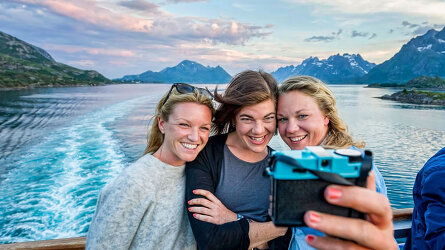
Enjoy Hurtigruten's famously relaxed atmosphere and cruise comfortably day and night, with no need to change for dinner. Read more

Make use of the wellness and recreation facilities on board, including a gym, sauna, and outdoor hot tubs. Read more
Availability Click on prices below to view cabin upgrades and details
Tour & cruises prices are per person. Prices shown have savings applied, are subject to availability and may be withdrawn at any time without notice. Prices and trip information are correct at the time at this point in time, however are subject to confirmation at the time of booking and are subject to change by Hurtigruten. For cruise itineraries, cabin images are sourced from Hurtigruten. These should be treated as indicative only. Cabin inclusions, upholsteries and room layout may differ to the image(s) shown depending on the ship selected and your sailing dates.
Similar Cruises

18 Days Buenos Aires Buenos Aires
Operated By: Hurtigruten
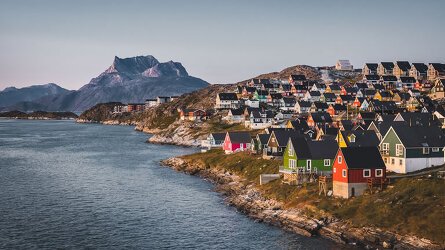
18 Days Reykjavik St. John's
Operated By: Hurtigruten
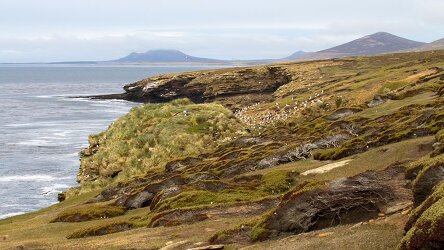
18 Days Buenos Aires Buenos Aires
Operated By: Hurtigruten

18 Days Valparaiso Buenos Aires
Operated By: Hurtigruten
